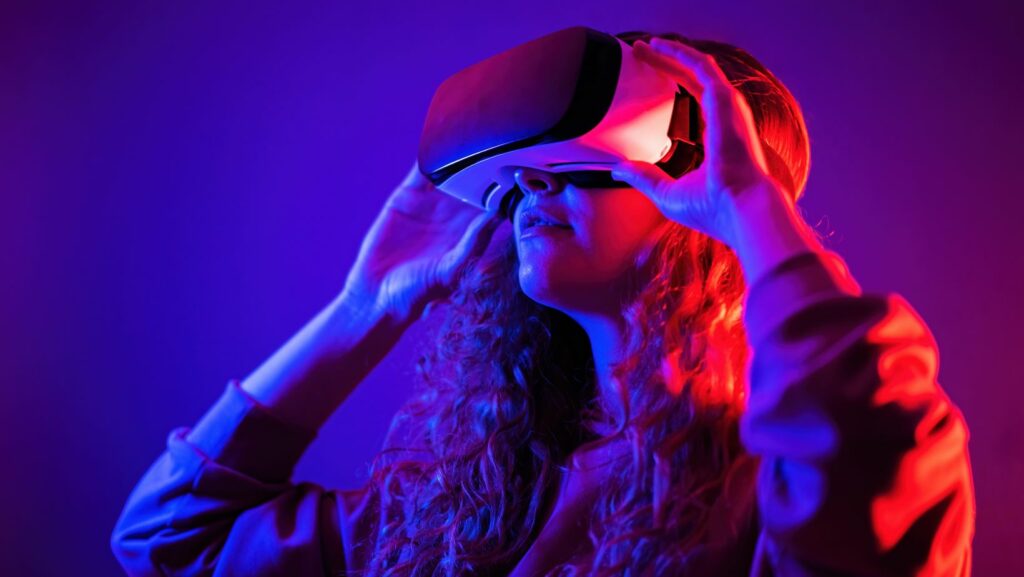
Virtual reality (VR) has long been heralded as the future of gaming, promising to transport players into immersive worlds where the boundary between the virtual and the real becomes increasingly blurred. Over the past decade, significant advancements in VR technology have brought this vision closer to reality, but what does the future hold for VR and its integration into game worlds?
The Current State of VR in Gaming
Today’s VR gaming experience is largely defined by a few standout headsets that offer cutting-edge technology and immersive gameplay:
- Oculus Rift: One of the pioneers in the modern VR space, the Oculus Rift offers high-resolution displays, precise motion tracking, and a comfortable design. It has a strong library of games and applications, making it a popular choice among VR enthusiasts.
- HTC Vive: Known for its room-scale VR capabilities, the HTC Vive allows players to move freely within a physical space, enhancing the sense of immersion. It features high-quality graphics, precise controllers, and robust tracking technology.
- PlayStation VR: As the only VR headset for a major gaming console, the PlayStation VR has made VR gaming more accessible to the mainstream audience. It offers a variety of exclusive titles and leverages the power of the PlayStation 4 and PlayStation 5 to deliver compelling VR experiences.
- Oculus Quest 2: A significant step forward in making VR more accessible, the Oculus Quest 2 is a standalone headset that does not require a PC or console. It is also not required to have these devices to use valorant betting sites all over the web. It combines affordability with impressive performance, featuring a high-resolution display, intuitive controls, and a growing library of games.
Several games have showcased the potential of VR, pushing the boundaries of what is possible in gaming. Regarded as a landmark title in VR gaming, “Half-Life: Alyx” offers a full-length, story-driven experience set in the beloved “Half-Life” universe. Its high production values, innovative gameplay mechanics, and immersive world have set a new standard for VR games.
A rhythm game that has gained widespread popularity, “Beat Saber” challenges players to slash blocks in time with music. Its intuitive gameplay, energetic soundtrack, and satisfying mechanics make it a standout title in the VR space.
While not a traditional game, VRChat has become a social hub where players can interact, create avatars, and explore user-generated worlds. It exemplifies the potential of VR as a platform for social interaction and creativity.
Technological Advancements Driving VR Integration
The future of virtual reality (VR) in gaming hinges on a series of technological advancements that promise to enhance the immersive experience, making VR more accessible and engaging. These innovations span hardware improvements, haptic feedback, eye-tracking, AI, and more, each playing a crucial role in driving VR’s integration into game worlds.
Future VR headsets are expected to become lighter and more ergonomic, addressing one of the primary barriers to prolonged use. Companies are investing in materials and designs that distribute weight more evenly, reducing strain on the neck and face.
Eliminating the need for cumbersome cables, wireless VR headsets will provide greater freedom of movement and a more seamless experience. Devices like the Oculus Quest 2 have already shown the potential of standalone headsets, and future iterations will likely enhance connectivity and battery life.
Advances in display technology will lead to higher resolution screens, reducing the screen door effect (visible pixelation) and enhancing visual clarity. This will make game worlds more realistic and immersive, drawing players deeper into the virtual environment.
Expanding the FOV will allow players to see more of the virtual world without turning their heads, creating a more natural and encompassing experience. This improvement will help bridge the gap between the real and virtual worlds.
Advanced haptic feedback technology, such as gloves and vests, will enable players to feel physical sensations corresponding to in-game actions. This tactile feedback will enhance immersion by allowing players to experience the texture, pressure, and resistance of virtual objects.
Integrating force feedback into VR controllers will provide a more realistic sense of interaction. Players will be able to feel the weight of objects, the recoil of weapons, and other physical forces, adding depth to the gameplay experience.

Eye-tracking technology will enable foveated rendering, where only the part of the screen that the player is looking at is rendered in full detail. This will reduce the computational load, allowing for higher-quality graphics and smoother performance. Eye-tracking will also enhance interactivity, allowing players to make selections and control the game using their gaze. This hands-free interaction will make VR more intuitive and accessible.
Integration into Game Worlds
The integration of virtual reality (VR) into game worlds represents a paradigm shift in how games are designed, played, and experienced. This fusion of cutting-edge technology with creative storytelling opens up new possibilities for immersion, interaction, and social connectivity within virtual environments. As VR technology advances, its seamless incorporation into game worlds will redefine the gaming landscape.
VR enables players to experience game narratives from a first-person perspective, making them active participants rather than passive observers. This approach enhances emotional engagement and allows for more personal, impactful storytelling. Game developers can create branching narratives that respond to players’ choices and actions. This interactivity ensures that each player’s journey is unique, fostering a deeper connection to the story and its characters.
VR enhances multiplayer gaming by providing a more immersive and realistic way for players to interact. Virtual spaces allow for more natural communication, making team-based games and social interactions more engaging. Platforms like VRChat have shown the potential for VR as a social medium. In these virtual hubs, players can meet, chat, and participate in activities together, fostering a sense of community and social connection.
Future VR games will feature persistent worlds that continue to evolve even when players are offline. These living environments can change based on in-game events, player actions, and real-world influences, creating a dynamic and ever-changing game world. Developers can continuously update and expand VR game worlds with new content, challenges, and events. This approach keeps the game world fresh and engaging, encouraging players to return regularly.
As VR becomes more integrated into mainstream gaming, cross-platform play will ensure that VR and non-VR players can interact and compete in the same game world. This inclusivity broadens the player base and enhances the social experience. Cross-platform play fosters unified gaming communities where players using different devices and platforms can come together. This interconnectedness breaks down barriers and creates a more cohesive and diverse player ecosystem.
Challenges and Considerations
While the future of virtual reality (VR) in gaming holds immense potential, several challenges and considerations must be addressed to ensure its successful integration and widespread adoption. These challenges span technical, economic, and ethical domains, each presenting unique obstacles that need to be overcome.
High-quality VR experiences require significant computational power to render immersive, high-resolution environments in real time. Developers must optimize game performance to ensure smooth gameplay, reduce latency, and prevent motion sickness. Ensuring that VR games are compatible with a wide range of hardware devices, from high-end gaming PCs to standalone VR headsets, is crucial. This requires extensive testing and optimization to accommodate different system specifications and performance capabilities.
The high cost of VR hardware and compatible gaming systems can be a barrier to entry for many potential users. Making VR more affordable through cost-effective manufacturing, subsidies, and financing options will be essential for broader adoption. Sustaining market demand for VR gaming requires a continuous stream of engaging and innovative content. Developers and publishers must work together to ensure a steady pipeline of high-quality VR games and experiences.

Motion sickness remains a significant issue for many VR users, caused by the disconnect between visual motion and physical sensation. Developers must design experiences that minimize motion sickness through careful control of movement and visual effects. Prolonged use of VR headsets can lead to physical discomfort, including neck strain and eye fatigue. Improving the ergonomics of headsets and controllers, along with designing experiences that encourage regular breaks, will enhance user comfort.
VR systems collect extensive data about users’ movements, behaviors, and interactions. Ensuring robust data privacy and security measures are in place is essential to protect user information and build trust. The immersive nature of VR can lead to addictive behaviors, with some players spending excessive amounts of time in virtual environments. Developers and platform providers should promote responsible use and incorporate features that encourage balanced playtime.
Conclusion
The future of virtual reality in gaming is bright, with technological advancements paving the way for more immersive, interactive, and engaging experiences. As hardware improves and developers explore the full potential of VR, we can expect game worlds to become richer and more dynamic. While challenges remain, the ongoing evolution of VR promises to transform the gaming landscape, offering players unprecedented levels of immersion and interactivity. The journey towards fully realizing this potential is ongoing, but the destination holds exciting possibilities for the future of gaming.












